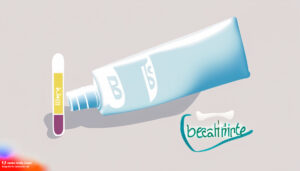How Acidic Is Toothpaste? Neutralizing Tips

The daily ritual of brushing our teeth with toothpaste is a fundamental part of our oral hygiene routine. While toothpaste is designed to clean and protect our teeth, it can also have a significant impact on the pH balance of our mouths. But just how acidic is toothpaste, and what are the implications for our oral health?
To understand the acidity of toothpaste, we need to look at its pH level. pH is a measure of how acidic or alkaline a substance is, with a pH of 7 being neutral, below 7 being acidic, and above 7 being alkaline. Most toothpastes have a pH level that ranges from 5.5 to 7.5, which is slightly acidic to neutral. However, some whitening toothpastes can have a pH level as low as 4.5, making them more acidic.
The acidity in toothpaste comes from the ingredients used to clean and protect our teeth. For example, abrasives like silica and calcium carbonate help remove plaque and surface stains, while foaming agents like sodium lauryl sulfate create a rich lather. However, these ingredients can also contribute to the acidity of toothpaste.
But why is the acidity of toothpaste a concern? The answer lies in the impact it can have on our teeth and gums. When we brush our teeth with acidic toothpaste, the acid can erode the enamel on our teeth, making them more susceptible to decay and sensitivity. Additionally, acidic toothpaste can also disrupt the natural balance of our mouth’s pH, leading to issues like dry mouth, bad breath, and even gum disease.
Fortunately, there are ways to neutralize the acidity of toothpaste and protect our oral health. One approach is to use a toothpaste with a neutral pH level, typically between 7 and 8. These toothpastes are designed to be gentler on our teeth and gums, while still providing effective cleaning and protection.
Another approach is to rinse our mouths with water after brushing our teeth. This can help to neutralize any remaining acid and restore the natural pH balance of our mouths. We can also use a fluoride mouthwash to help strengthen our teeth and protect against decay.
In addition to these tips, there are also some natural remedies that can help neutralize the acidity of toothpaste. For example, mixing a teaspoon of baking soda with water to create a paste can help neutralize acid and reduce the risk of tooth decay. Similarly, swishing coconut oil around our mouths can help to reduce inflammation and promote healing.
Key Takeaway:
The acidity of toothpaste can have a significant impact on our oral health, but there are ways to neutralize it and protect our teeth and gums. By choosing a toothpaste with a neutral pH level, rinsing our mouths with water after brushing, and using natural remedies like baking soda and coconut oil, we can reduce the risk of tooth decay and promote a healthy, balanced mouth.
What is the ideal pH level for toothpaste?
+The ideal pH level for toothpaste is between 7 and 8, which is neutral to slightly alkaline. This pH range helps to protect our teeth and gums from acidity and promote a healthy oral environment.
Can I use baking soda as a natural alternative to toothpaste?
+While baking soda can be used as a natural abrasive to clean teeth, it should not be used as a replacement for toothpaste. Baking soda lacks the fluoride and other ingredients that are essential for protecting our teeth from decay and promoting oral health.
How often should I rinse my mouth with water after brushing my teeth?
+It's a good idea to rinse your mouth with water after brushing your teeth at least twice a day, in the morning and before bed. This can help to neutralize any remaining acid and restore the natural pH balance of your mouth.
In conclusion, while toothpaste is an essential part of our oral hygiene routine, its acidity can have a significant impact on our oral health. By choosing a toothpaste with a neutral pH level, rinsing our mouths with water after brushing, and using natural remedies like baking soda and coconut oil, we can reduce the risk of tooth decay and promote a healthy, balanced mouth.
| pH Level | Description |
|---|---|
| Below 5.5 | Highly acidic, can erode tooth enamel and disrupt mouth's pH balance |
| 5.5-7 | Slightly acidic to neutral, may still contribute to tooth decay and sensitivity |
| 7-8 | Neutral to slightly alkaline, ideal for promoting oral health and protecting teeth |

As we continue to navigate the complex world of oral health, it’s essential to remember that every small change we make can have a significant impact on our overall well-being. By being mindful of the acidity of toothpaste and taking steps to neutralize it, we can promote a healthier, happier smile for years to come.
Pros and Cons of Using Acidic Toothpaste:
- Pros:
- Effective at removing plaque and surface stains
- Can help to prevent tooth decay and promote oral health
- Cons:
- Can erode tooth enamel and disrupt mouth's pH balance
- May contribute to tooth decay and sensitivity
Ultimately, the key to maintaining good oral health is to find a balance between effective cleaning and protection, and minimizing the risks associated with acidic toothpaste. By being informed and taking a proactive approach to our oral health, we can enjoy a healthy, beautiful smile for years to come.


